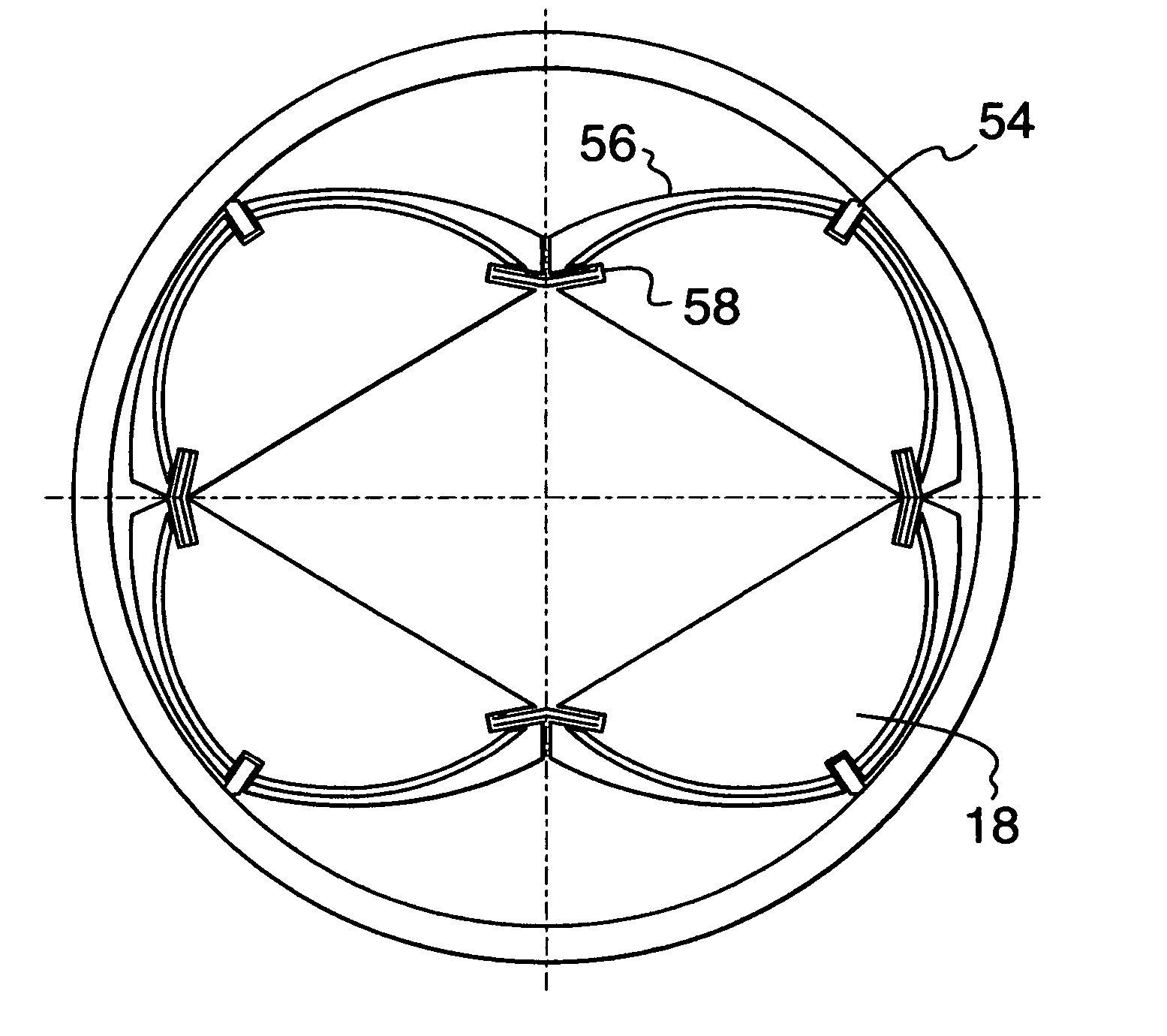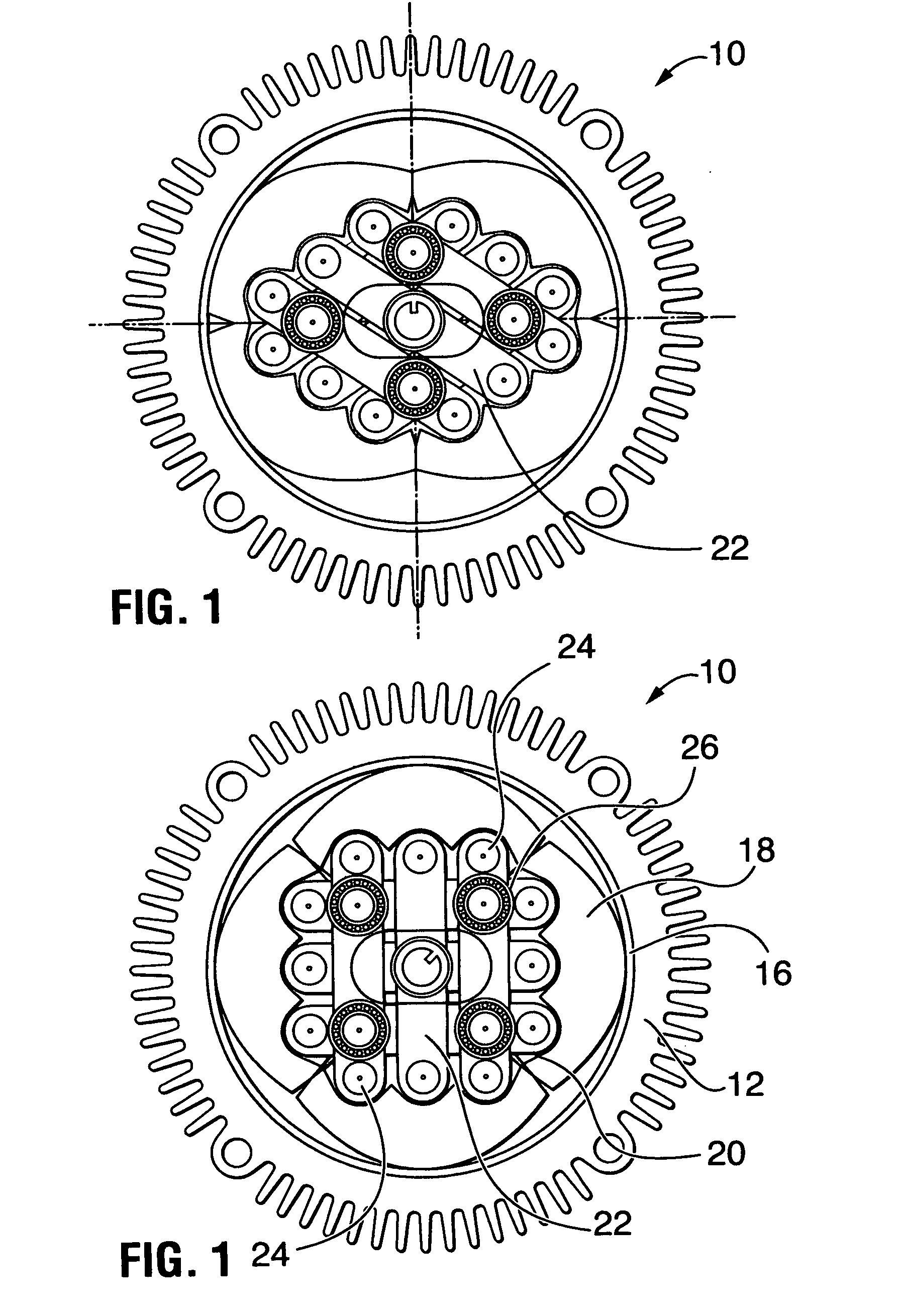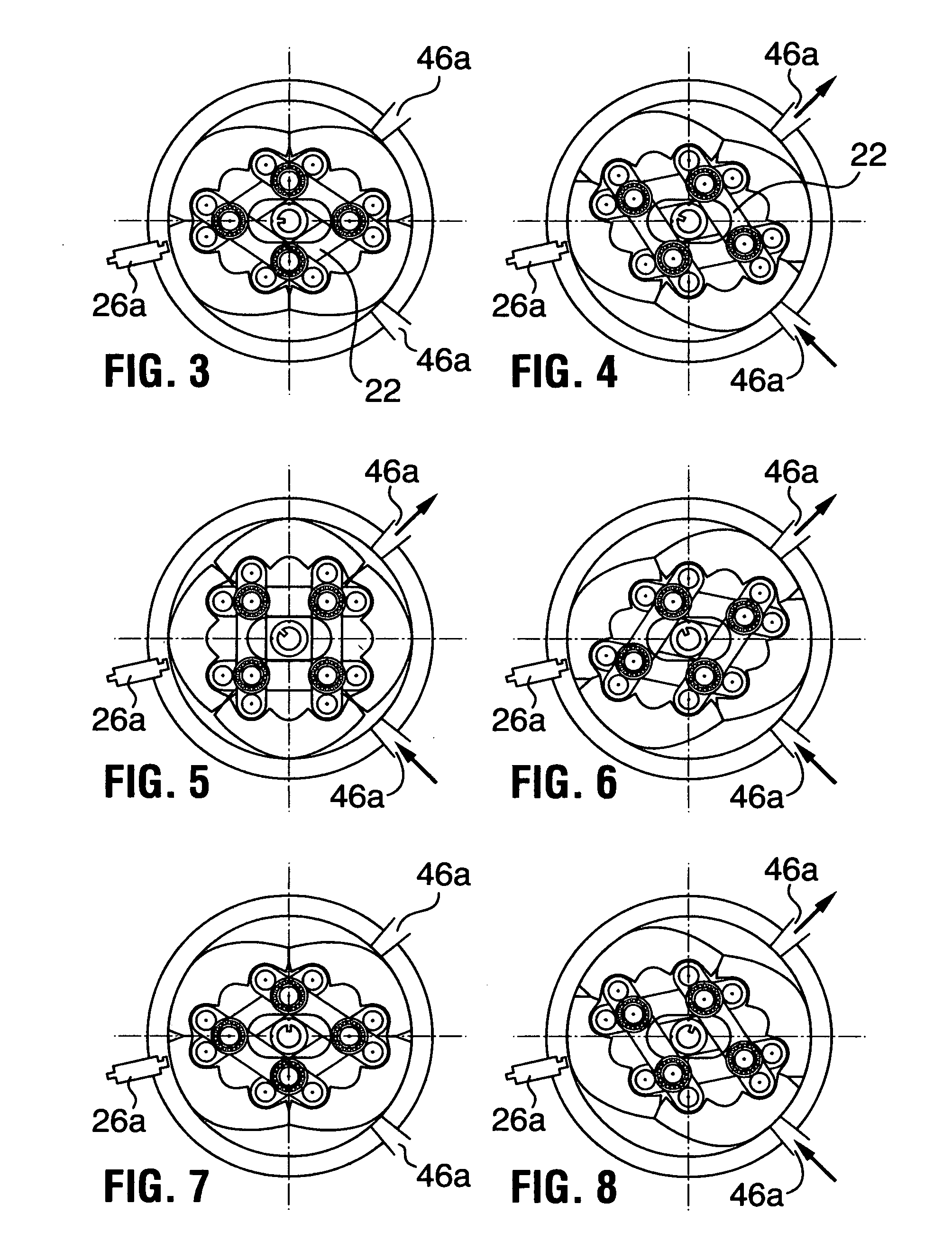Ballanced rotary internal combustion engine or cycling volume machine
a rotary internal combustion engine and rotary technology, applied in the direction of rotary piston engines, rotary or oscillating piston engines, engine lubrication, etc., can solve the problems of compromising reliability, affecting the design, and unable to employ rollers at the end of sealing carriages, etc., to achieve a simplified and effective engine sealing system
- Summary
- Abstract
- Description
- Claims
- Application Information
AI Technical Summary
Benefits of technology
Problems solved by technology
Method used
Image
Examples
Embodiment Construction
[0109]FIG. 1 illustrates a cross-sectional view of the rotary apparatus, generally denoted by numeral 10. FIGS. 11 and 12 illustrate a side and partially cutaway view of the arrangement 10, respectively. With respect to FIGS. 1, 11 and 12, the arrangement 10 provides a housing 12 having end covers 14 within which is disposed a stator 16. The stator is shown in the example as a circular arrangement; however, the arrangement may also be of a semi-circular shape or have an adjustable liner to be discussed hereinafter.
[0110] Disposed within the housing 12 is a plurality of pistons 18, shown in the example in a quantity of four. As is illustrated, the pistons 18 have a general arc shape for contact with the stator 16. The internal area of the pistons includes a plurality of generally rounded or scalloped portions 20. The scalloped portions are configured to permit general movement of linkages 22.
[0111] As illustrated, diametrically opposed pairings of pistons 18 are connected by linkag...
PUM
 Login to View More
Login to View More Abstract
Description
Claims
Application Information
 Login to View More
Login to View More - R&D
- Intellectual Property
- Life Sciences
- Materials
- Tech Scout
- Unparalleled Data Quality
- Higher Quality Content
- 60% Fewer Hallucinations
Browse by: Latest US Patents, China's latest patents, Technical Efficacy Thesaurus, Application Domain, Technology Topic, Popular Technical Reports.
© 2025 PatSnap. All rights reserved.Legal|Privacy policy|Modern Slavery Act Transparency Statement|Sitemap|About US| Contact US: help@patsnap.com



